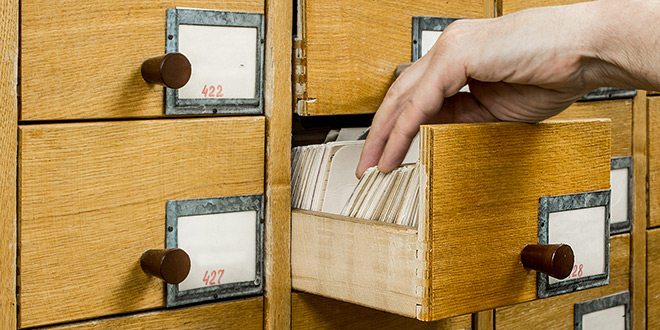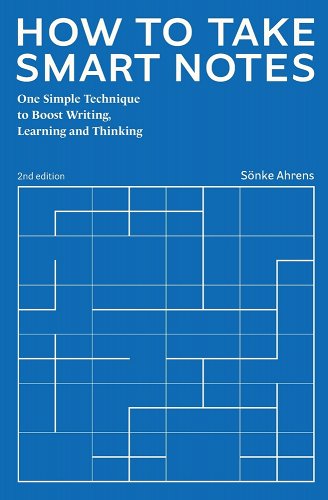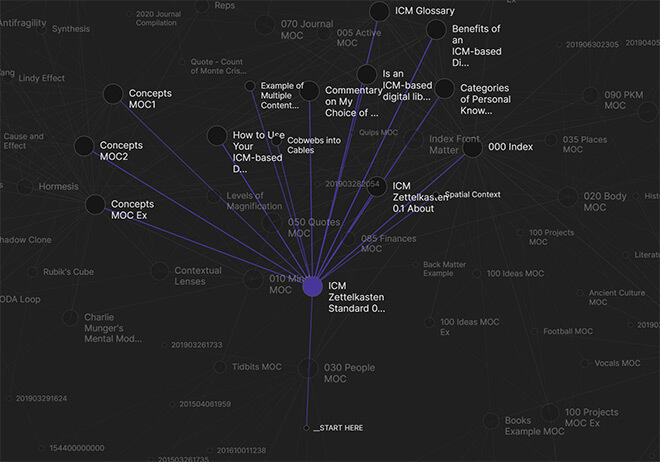
Zettelkasten: Think inside the box
Let me ask you a question:
What have you done with the text you underlined in that book you read last week? And have you revisited the other book (you know, the one with so many great quotes that it’s full of dog ears)?
In other words: Are you satisfied with how you manage all those great ideas you’ve read about in books?
I wasn’t. But that changed recently.
Over the past few years, I’ve tried to come up with a system that would allow me to track the most salient ideas in the books I’ve read.
- I underlined.
- I used sticky tabs (I have a copy of Art and Technics by Lewis Mumford that looks like a Christmas tree).
- I’ve even tried to copy excerpts on index cards.
Nothing worked: I felt like regardless of how much I read, my knowledge was as good as my memory… and that was like filling a leaky bucket.
Do you ever feel this way? If so, I’ve got some good news. There is a solution!
Read on.
Underlining doesn’t work
 Sönke Ahrens wrote a terrific book titled How to Take Smart Notes for “Students, Academics, and Nonfiction Book Writers.” The tool at the core of the book is the Zettelkasten, which is German for “slip-box”— a helpful note-taking method invented by Niklas Luhmann.
Sönke Ahrens wrote a terrific book titled How to Take Smart Notes for “Students, Academics, and Nonfiction Book Writers.” The tool at the core of the book is the Zettelkasten, which is German for “slip-box”— a helpful note-taking method invented by Niklas Luhmann.
Luhmann was a prolific German sociologist who wrote more than 70 books and nearly 400 articles. He invented a way to think through writing, relying on rigorous and systematic note-taking. He’d write ideas on small index cards, number them, and file them in a drawer.
In his Zettelkasten method, there are three kinds of notes:
- Fleeting notes: You know, those great ideas that come to you in the shower or while commuting. The fleeting ideas that disappear unless you jot them down. All fleeting notes go to an inbox (a box, a folder— whatever works for you), and you review them within 48 hours. The lucky ones become permanent (more on that below).
- literature notes: No more underlining! Every time you read something that you don’t want to forget, you have to rewrite it in your own words (and that’s a key step) to create a literature note. You make them concise but in full prose, and they rarely include full quotes.
- permanent notes: Only permanent notes are kept in the Zettelkasten—whatever recording method you have chosen to use (more on that below). Fleeting or literature notes can become permanent notes if they contribute to the ongoing conversation of ideas happening in the Zettelkasten.
Before converting a note from the other categories into a permanent note, you would ask yourself a few questions: What does this idea bring? Does it support an existing idea? Does it contradict another? Once a fleeting note becomes permanent, you can then discard it. All literature notes, whether they were turned into permanent notes or not, go into your reference system.
Luhmann designed a terrific way to number permanent notes and thread them. At the end of his career, his Zettelkasten contained 90,000 notes.
“If you want to learn something for the long run, you have to write it down. If you want to really understand something, you have to translate it into your own words.” —Sönke Ahrens
It’s not about the notes: A second brain
The Zettelkasten is more than a collection of index cards (paper or digital). It is a tool to augment our memory and our thinking. As Ahrens writes:
“We need a reliable and simple external structure to think in that compensates for the limitations of our brains.”
By systematically entering notes in a Zettelkasten, we make better use of our brains:
“The slip-box is designed to present you with ideas you have already forgotten, allowing your brain to focus on thinking instead of remembering.”
To put it another way …
The Zettelkasten is a way to write from the bottom up; you don’t need to write an outline or a plan. You can simply consult the box and follow a thread of pre-written arguments. Those great ideas are already written down in your own words, backed by references, and interconnected in a network that you built.
Because it’s been used primarily by scholars, the Zettelkasten is focused on writing, but I believe that any creative (and as such, curious) person whose work depends on generating new ideas could benefit from it.
Build your own Zettelkasten
You could go paper, like Luhmann, but you would run the risk of losing your notes (if your data doesn’t exist in three places, it doesn’t exist at all).
I decided to go digital, and Sonke’s book introduces a series of tools for keeping notes and references.
For my reference system, I use Zotero, a “free, easy-to-use tool to help you collect, organize, cite, and share research.” It is available on Windows, Mac, and Linux, as well as a web app and browser extensions that let you add a reference from a web page. It is straightforward to add notes to each reference, whether it’s an article, a book, a podcast, etc. Oh, and try dragging and dropping an academic paper in PDF form inside Zotero and watch the application populate the metadata for you. (It’s beautiful.)
I picked Obsidian as my digital Zettelkasten (although Zettlr has some very powerful features, too). Just like Zotero, it is free (the dev team welcomes financial support) and it stores notes as Markdown files in a folder system. Linking notes is done through wikilink syntax, and a graph view shows how interconnected they are.

In Obsidian’s Zettelkasten, text labels (notes) are interconnected to form a complex network of ideas. Source: obsidian.md
As you see, in Obsidian clusters are a visual way to detect ideas worth exploring, since they’re well connected.
I keep my Zettelkasten notes in a Dropbox folder that I sync with my Mac, Windows, and Linux machines, so they’re always up-to-date and available on every machine in my house.
Building a Zettelkasten takes a while
I have a baby Zettelkasten. A newborn, really, right now. It will take a few years of nurturing to start having conversations inside and with the Zettelkasten. Keep this in mind if you expect insights to jump at you fast—they won’t.
But like anything worth doing in life, it’s about the process.
The sooner you get started, the sooner you will have your very own way to keep track of those fleeting thoughts and literary ideas you come across.
And won’t it feel good to know that you’ve put duct tape on that leaky bucket and your knowledge will begin to improve and increase instead of vanishing week after week?
Resources
- Communicating with Slip Boxes, An Empirical Account, an essay by Niklas Luhmann, (translated from German by Manfred Kuehn)
- How to Take Smart Notes: One Simple Technique to Boost Writing, Learning and Thinking – for Students, Academics and Nonfiction Book Writers, by Sönke Ahrens
- Of course, there’s a subreddit: https://www.reddit.com/r/Zettelkasten/
- An open-source Markdown knowledge base with bidirectional [[link]]s built on top of VSCode: https://github.com/svsool/memo
hi mate could you help me with literature notes x permanent notes ? i can’t understand yet =(
Hello, Marcos! No problem. My understanding is that literature and permanent notes live in separate places. Literature notes are notes (in your own words) that you take while reading an article, a book, etc. They help you process what you’ve just read and act as a summary too.
Now, these literature notes will also spark new ideas—your ideas—that you will turn into permanent notes in your Zettelkasten. You can also reference literature notes in your permanent notes.
If you end up writing something that you’ll publish, it will be much easier for you to quote all of your sources appropriately. Does it make sense?
Thank you Mr Deneuville, this was a really useful and accessible article. I had a similar question to your previous commenter about providing further clarity for literature and permanent notes. Your additional note nailed it for me and has motivated me to use the Zettelkasten system.
Thank you
Hello, Joan! Thank you so much for your comment. I’m glad that my note helped!
Great article! I especially enjoyed the seperation of fleeting notes, literature notes and permanent notes as i think it is the most important part of the Zettelkasten. For beginners it might be hard to get into this note-taking method. For that reason we wrote a beginners guide to the Zettelkasten. Check it out if you want :) https://zenkit.com/en/blog/a-beginners-guide-to-the-zettelkasten-method/
Thanks for your comment, Alex! And for sharing your resource.